Rome (Roma in Italian) is Italy’s capital and largest city. It’s in the Lazio region in central Italy. It’s one of the most historic cities in the world and the second most popular city to visit in Europe (after Paris). Rome is well liked by history buffs, couples, families, friend groups, and backpackers alike.
Rome was founded in 753 BC, but there’s archaeological proof that people had settled here since c. 1200 – 1000 BC. That’s why Rome is one of the oldest continuously occupied cities in Europe! Besides, Rome has been the home of the Catholic Church since The Middle Ages.
Rome is often called The Eternal City, and for good reason! Just think of the epic Colosseum, Trevi Fountain, Pantheon, but also a few hidden gems, like Curia di Pompeo (Curia of Pompey) and Terme di Caracalla (Baths of Caracalla), that have been here for centuries!
But Rome is also known for its art scene, museums, mouthwatering food, nightlife, and great shopping. In this 3 Days in Rome Travel Guide, I’ll share famous attractions and hidden gems to visit, as well as where to stay and great restaurants, so you can make the most out of your time!
Disclosure: I only recommend products that I’ve used in the past, and all opinions expressed in this post are my own. This post contains affiliate links. If you use one of the links throughout the page to buy something, I may earn a small commission at no extra cost to you. Thank you!
The Best Things to See and Do in Rome
Explore the Colosseum
Address: Piazza del Colosseo, 1, 00184 Roma RM, Italy
For many tourists, visiting Rome’s famous symbol, the Colosseum, is at the top of their to-do list. This epic landmark was completed in 80 AD, so it’s almost 2,000 years old! It could host more than 50,000 spectators, so it was the biggest amphitheatre in ancient Roman times.
Entertaining events back then were exotic animal shows, executions, dramatic plays, and gladiator fights (similar to the Arena in Verona)! The Colosseum was open for more than 500 years, with the last games happening in the 6th century.


The Colosseum from the outside and interior. Photo #2 is by Ben Lee on Unsplash.
With time, the Colosseum fell victim to lootings, earthquakes, and bomb attacks during World War II. But it still stands proudly today! Besides, it was used as a storehouse, church, cemetery, and even a castle in the past.
In 2007, the Colosseum was added to the list of The Seven Wonders of the Modern World.
While the lines to see the inside of the Colosseum are often crazy long, I heard it’s worth the wait! Admission for a self-guided tour into the Colosseum is 18 EUR and guided tours are available as well.
In the winter months, the Colosseum is open daily (except December 25th and January 1st) from 8:30 to 4:30 pm. In the spring and summer, it’s open until 7:15 pm.
Check Out Fontana di Trevi (Trevi Fountain)
Address: Piazza di Trevi, 00187 Roma RM, Italy
Just a short walk further, you can’t miss another Rome landmark: The baroque Trevi Fountain, which is also Rome’s oldest fountain! It was designed by the Roman architect Nicola Salvi, and Giuseppe Pannini and others completed it in 1762.
Trevi Fountain stands for Rome’s important relationship with water. It was the ending spot of the aqueduct that brought water to ancient Rome from the countryside.
The beautifully carved sculptures include characters from Greek mythology and Roman history, e.g. the gods Oceanus and Triton, Agrippa, and Trivia. Besides, there’s a myth that if you throw a coin over your left shoulder in the fountain, you’re supposed to find your way back to Rome someday!

Trevi Fountain is very popular with tourists, especially couples, who often take a romantic photo in front of it. So similar to the Colosseum, it’s best to visit in the early morning for less crowds. There’s no charge to visit Trevi Fountain.
Get Lost in Trastevere
Looking for a more authentic Roman experience? Then spending time in vibrant Trastevere is a must! This former working-class, now artsy and alternative neighbourhood is known for its nightlife and restaurant scene. You can also book food and wine tours and not as many tourists come here.
While strolling on Trastevere’s cobblestone streets, I stumbled upon a bunch of cool things that I didn’t see anywhere else in Rome. For example, there was graffiti on pretty much every building, the awesome Radiation Records store, and tons of cool stickers on the door of a local bar!

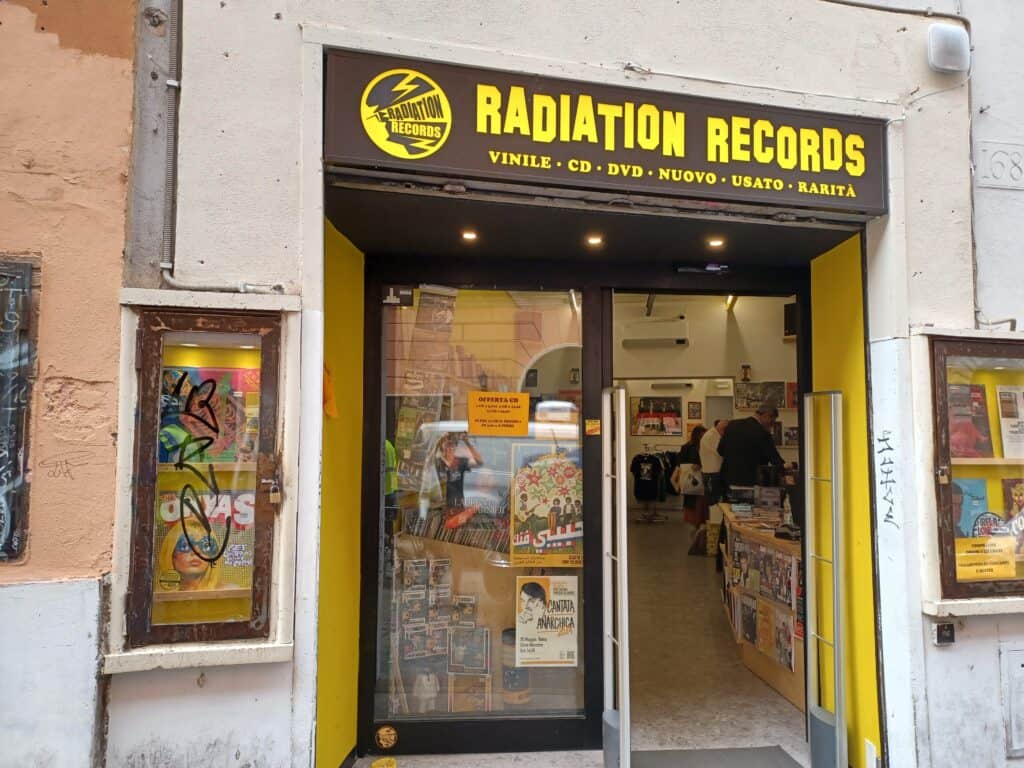

If you like churches, Trastevere won’t let you down, either. You can’t miss the stunning Basilica di Santa Maria (Piazza di Santa Maria in Trastevere, 00153 Roma RM, Italy), which was built in the 4th century AD. It is said to be the oldest Christian church in Rome.
Only a few minutes away, you can stock up at the Fresh Food market on Piazza di San Cosimato, which has been around since 900. It’s open Monday to Saturday from 6 am – 1:30 pm. Lastly, there are lots of performances on the streets of Trastevere in the warmer months and great shops!


Basilica di Santa Maria and a street in Trastevere. Photo #2 is courtesy of Alessandro Cossu on Wikimedia Commons.
Terme di Caracalla (Baths of Caracalla)
Address: Viale delle Terme di Caracalla, 00153 Roma RM, Italy
When I googled less touristy spots in Rome, Terme di Caracalla was one of the top recommended places. These are the ruins of ancient Rome’s largest public bathhouse complex, which was built in the 3rd century AD. It covered 11 hectares and could accommodate more than 2,500 guests!
The bathhouse was decorated with stunning mosaics, frescos and marble cladding, that still partially exist today. Terme di Caracalla had cold, warm and hot baths, sauna, pools, massage rooms, change rooms, receptions, and even libraries and brothels!


Sadly, the bathhouse couldn’t be used anymore in the 530’s after the Goths attacked Rome. This brought severe damage to the aqueducts that transported water to Terme di Caracalla. Afterwards, the bathhouse complex was left in ruins.
When I visited Terme di Caracalla in May 2024, there was a nice photography exhibit of the 35 most important photographers from the 20th and 21st century. What a great contrast to the Roman ruins! Italian operas happen here often in the summer as well.
Terme di Caracalla is open year-round (except Mondays, December 25th and January 1st) from 9 am to 4:30 pm (last entry at 3:30 pm). Admission for a self-guided tour is 10 EUR.
The Pantheon
Address: Piazza della Rotonda, 00186 Roma RM, Italy
Another Rome highlight you shouldn’t miss is The Pantheon. Built between 25 and 27 BC as a temple for 12 Roman gods, it’s the only building from Ancient Roman times that has never been affected by natural or man-made disasters.
Pope Boniface IV turned the Pantheon into a Christian church in 608 AD. Its exterior and interior are equally impressive. For example, inside the building, you’ll see the largest unreinforced dome ever built.


The Pantheon from the outside and inside. Photo #2 is by Nicholas Martinelli on Unsplash.
The Renaissance painter and architect Raphael was so impressed by The Pantheon that he asked for his remains to be buried here after his passing in 1520.
Admission to get inside the Pantheon (plus an audio guide) is 15 EUR and a guided tour is 25.50 EUR. On every first Sunday of the month, entry to The Pantheon is free!
The Pantheon is open daily (except January 1st, August 15th, and December 25th) from 9 am to 7 pm (last entry at 6:45 pm).
The Spanish Steps
Address: Piazza di Spagna, 00187 Roma RM, Italy
The iconic Spanish Steps in Rome were built in Rococo style between 1723 and 1726. The 135 steps start at Piazza di Spagna square and take you up to the French monastery church Trinita dei Monti (completed in 1587). There are three terraces referring to the Holy Trinity.
Before climbing up the steps, check out the Fontana della Barcaccia (Fountain of the Ugly Boat). Its sculptor, Pietro Bernini, chose this unusual name because the Tiber river flooded this area in 1598 and an ugly little boat stranded here.
Once you arrive at the top of the stairs, you’ll be rewarded with a beautiful view of Rome!


The Spanish Steps (Photo credit: Mike McBey on Wikimedia Commons) and the stunning Rome view!
Surprisingly, the French (under King Louis XII) commissioned the construction of the Spanish Steps. Besides, since the Spanish embassy was at Piazza di Spagna square in the 17th century, it was decided to call them the Spanish Steps.
In late April, Rome celebrates its anniversary, so the Spanish Steps are decorated with beautiful azalea flowers! There’s no fee to visit and climb up the Spanish Steps.
If you feel like going for a shopping tour after, there are plenty of stores in this area!
Curia di Pompeo (Curia of Pompey)
Address: Largo di Torre Argentina, 00186 Roma RM, Italy
Another less touristy, but historically significant attraction in Rome is Curia di Pompeo. Opened in 55 BC, it was one of the a meeting halls for the Senate members of Rome. What makes this place so important? Well, this is where Julius Caesar was stabbed 23 times by a group of senators on March 15, 44 BC!
But that’s not all. Curia di Pompeo is also the home of four Roman temples and an old theatre, all dating back to the Roman Republic. After Caesar’s death, the site was closed and walled up, and some say it was set on fire later!

Fast forward to the 1930’s, Italian dictator Benito Mussolini ordered for Curia di Pompeo to be excavated. Soon after, many of Rome’s stray cats chose this abandoned, but safe spot for laying around, strolling, and enjoying the sun!
From 1930 to 1993, so-called gattare (cat ladies) took care of the stray cats at Curia di Pompeo. In 1993, Lia Dequel and Silvia Viviani decided to help one of these ladies who fed, spayed, and neutered the cats. It didn’t take too long until Torre Argentina Cat Sanctuary was born!
Today this place is run by people taking care of the 130 cats and it’s the oldest cat shelter in Rome! Cat lovers are welcome to donate or adopt a cat at a distance, but it’s not allowed to feed them. Torre Argentina Cat Sanctuary is open daily from 12 pm to 4:30 pm.


One of the cats enjoying the shade of one of the ruins of Curia di Pompeo.
Last but not least, who knows what Julius Caesar, who was scared of cats, would say that a cat sanctuary now stands where he died all these years ago? I guess we’ll never find out! 😛
Visit Basilica di San Pietro (St. Peter’s Basilica)
Address: Piazza San Pietro, 00120 Città del Vaticano, Vatican City
The last attraction in this guide is St. Peter’s Basilica in the independent state of Vatican City. The city of Rome surrounds the smallest city-state in the world, which gained its independence in 1929.
The current St. Peter’s Basilica was completed in 1626 to replace the Old St. Peter’s Basilica, which stood here from the 4th century and was torn down in the 16th century. As the home of the Pope, St. Peter’s Basilica is one of the holiest temples for Christendom and it’s one of the largest churches in the world!
Up to 20,000 people can be accommodated inside the Basilica. If you’d like to see St. Peter’s Basilica from the inside, please cover your shoulders and knees. There’s stunning art in here, too, e.g. The Pietà, a sculpture by Michelangelo.


St. Peter’s Basilica from the outside and inside. Photo #2 is credit of Gary Todd at Wikimedia Commons.
Visitors can also climb to the top of the dome, that inspired the design of other buildings, like the Capitol in Washington D.C. Besides, there’s a great view of St. Peter’s Square from the dome, as well as a part of Rome if it’s a clear day!
St. Peter’s Basilica is open year-round from 7 am to 7:10 pm and it’s free to visit. There’s a fee to visit the dome though, which is open from 7:30 to 5 pm (in winter) or 6 pm (in summer). You can climb up all 551 steps to the top (at 8 EUR) or take an elevator to the terrace and go up the remaining 320 steps (at 10 EUR).
Where to Stay in Rome
Same as other big European cities, Rome has accommodation options for any kind of budget.
I booked a dorm bed at Alessandro Palace & Bar Hostel (Via Vicenza, 42, 00185 Roma RM, Italy), which is pretty close to public transit, restaurants, bars, etc.
The dorm room was very clean and spacious and the staff was helpful as well. I also liked that it’s only 10 minutes walk from Rome’s Termini Station (the main train station). The bar sounds pretty cool, too, with karaoke, Italian Pizza Nights, Happy Hour, and Beer Pong!
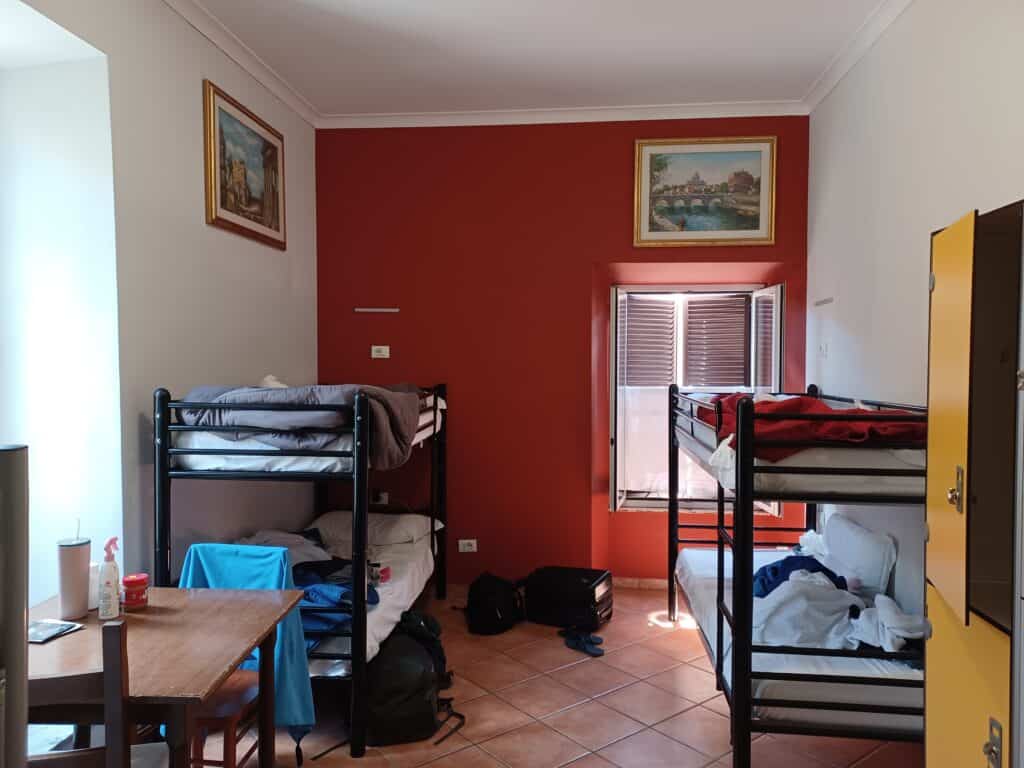
But I didn’t like that there was no breakfast at the hostel and that I had to pay a fee for leaving my luggage in their storage room after check out. This was the only place in Italy where this happened though, so I’d give Alessandro Palace & Bar Hostel another chance. 🙂
Where to Eat & Drink in Rome
Of course, Rome also has tons of restaurants to choose from, and there are great vegan and vegetarian options! Here are my favourites:
Aromaticus Bistro Trastevere
Address: Via Natale del Grande, 6/7, 00153 Roma RM, Italy
Looking for a great vegan lunch spot while wandering around Trastevere? Then I suggest checking out the rather small, but very cozy and stylish Aromaticus Bistro. The vibe is super nice, with green painted walls, and healthy food, fresh juices, smoothies, and dessert on the menu.
A few examples are vegan burgers, tempeh wrap, cheesecake, rice bowls, and soba noodles. I tried their Red Velvet Smoothie, Falafel Plate with lettuce and hummus, and an Oat Cookie. It was quite busy, so the food took a bit to arrive, but it was so yummy! Especially the falafel were super crispy!

Aromaticus Bistro Trastevere is open daily (except Mondays) from 12 pm to 11 pm.
Flower Burger Roma
Address: Via dei Gracchi, 87, 00192 Roma RM, Italy
Only a short walk from Vatican City, trendy Flower Burger is perfect for travelers looking to try something different on their trip! There are two other locations of this restaurant chain in Rome.
They’re famous for their many colourful vegan burgers (green, purple, pink, yellow, grey, etc.)! The decor is very unique as well, and it’s obvious that lots of love and passion was put into this place! I went for the Cherry Bomb Burger with edamame beans on the side, and it was great!


This Flower Burger location is open daily from 12 pm to 3 pm and 7 pm to 10 pm (until 10:30 pm on Fridays and Saturdays).
Romeow Cat Bistrot
Address: Via Francesco Negri, 15, 00154 Roma RM, Italy
For a yummy vegan breakfast and making friends with a few cats (la dolce vita, literally!) check out Romeow Cat Bistrot. This is Rome’s first cat café and the vibe is super cozy and chill, with Jazz music playing in the background!
The cats have tons of hiding spots at this rather minimalist café. There’s also a second floor for the guests and cats to relax with couches, pillows, and books. Besides, you can let off steam by adding some colour to the colouring books on the tables. What a great pastime while waiting for your food!
I tried their Chocolate Smoothie and Pancakes, which were a perfect start to my day! Most of the kitties were sleeping, but it was nice watching them snooze and spending time at this place for a bit.
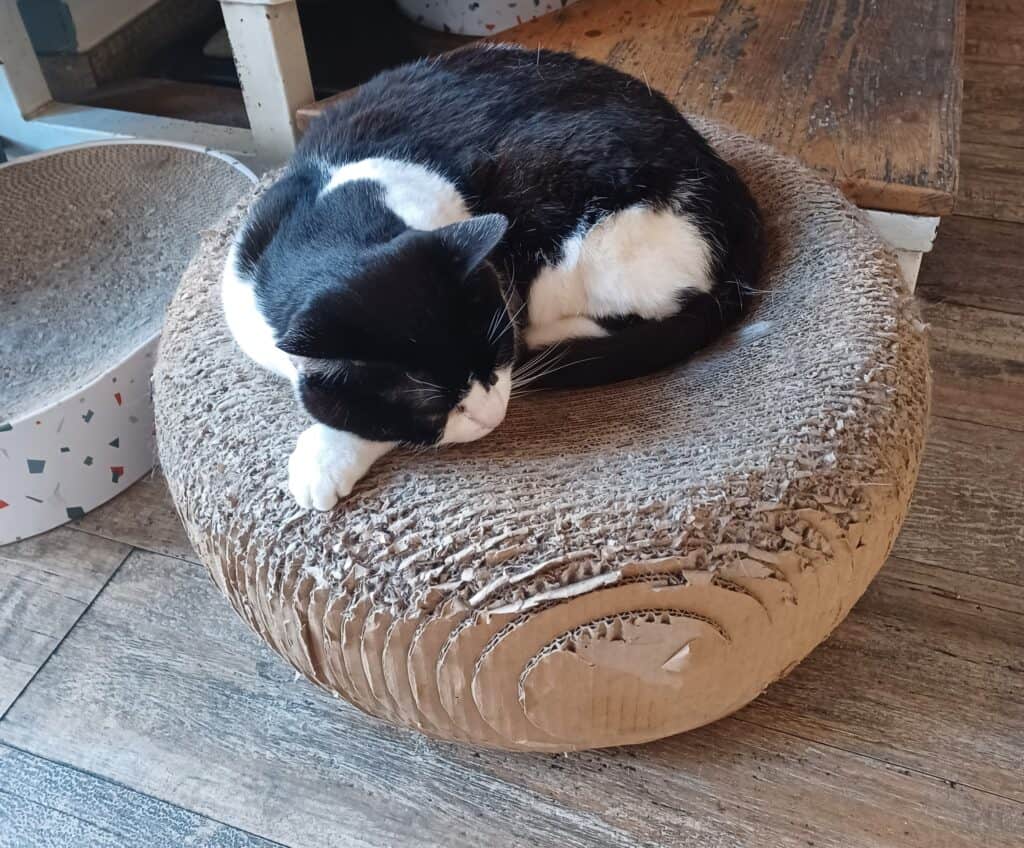

Romeow Cat Bistrot is open Wednesdays from 10 am to 11:45 am and 1 pm to 2:30 pm, and 10 am to 11:30 and 1 pm to 2:30 pm from Thursday-Sunday. It’s closed on Mondays and Tuesdays.
Strada Romana Restaurant
Address: Via Vicenza, 19, 00185 Roma RM, Italy
Right across from Alessandro Palace & Bar Hostel, Strada Romana is a traditional Roman restaurant and super convenient to go to after a long day of exploring Rome!
Their menu features meat and fish dishes, but also salads, vegetarian pasta, desserts, and local wines! I tried their homemade ravioli filled with ricotta cheese and spinach in tomato sauce. It was very tasty and they have an English menu as well.

Strada Romana is open daily from 5 pm to 10:30 pm.
How to Get to and Around Rome
As one of Europe’s top tourist destinations, Rome has a great public transit network. You can choose between buses, metro (subway), urban railways, and trams that go all over the city. The metro is the fastest option and it stops very close to many attractions (e.g. the Colosseum).
Buses go to areas not covered by the metro, but are slower because of constant traffic jams in Rome. Trams are good, but carry less passengers than the metro. Besides, there’s the Rome Sightseeing Bus, taxis and Ubers, but taxis are insanely expensive, so I’d avoid them.
Driving in Rome is also not recommended because of crazy traffic. Instead, some people like to rent bikes (there are bike lanes) or explore Rome on foot, either independently or as part of a walking tour.
Rome Fiumicino “Leonardo da Vinci” International Airport is the busiest airport in Italy. Of course, Trenitalia trains go to/from Rome as well (Termini Station is the main station). I booked Flixbus from Pescara to Rome, which was quite cheap and it only took about 2.5 hours!
How to Stay Safe in Rome
Overall, Rome is considered a safe city. Still, I’d recommend to keep your valuables out of sight, as pickpocketing is quite common. Thieves are often active around tourist attractions, like the Colosseum and St. Peter’s Square.
Scammers can be found in Rome as well. So make sure to not buy skip-the-line tickets from unofficial tickets offices. I also saw tons of street vendors trying to sell packages to tourists near the Colosseum, as well as others trying to sell roses by the Spanish Steps. Just ignore them and they won’t chase you.
As a female solo traveler, I felt generally safe in Rome. But to be on the safe side, I wore a money belt when visiting crowded spots.
The Best Time to Visit Rome
Similar to other destinations in Italy, the most popular time to visit Rome is in the summer months (June to August). While this is when the weather is mostly great, it can get incredibly hot. So it’s best to get up early to visit Rome’s hotspots to avoid the heat and crowds.
In my opinion, it’s better to visit Rome in the shoulder season (April-May and September-October). While it was busy at famous tourist attractions when I was there in late May 2024, I think it’s much worse in the summer. I also liked the warm, but not hot temperatures (20 to 25C/68 to 77F).
Although winter (November-March) is the quieter time of the year, there are still fun events going on in Rome, like Carnival in February and Epiphany in January. So whenever you decide to visit Rome, you can be sure to have a blast! 🙂

Is Rome an Expensive City?
Yes, Rome is known as one of the most expensive cities in Southern Europe. That being said, it’s not difficult to visit on a budget!
While staying at Alessandro Palace & Bar Hostel was more expensive than other hostels in Italy, it was still cheaper than many hostels in Vancouver or Toronto, lol! It also has a kitchen for cooking your own meals. Accommodation costs go up in the summer months though.
Costs for public transit and restaurant meals were affordable (a 72-hour ticket is 18 EUR), although I noticed that fish or meat entrées are often more expensive than vegetarian or vegan dishes.
Many of the attractions I visited were free as well. But if you plan on entering some, like the Colosseum or Pantheon, there’s an entrance fee.
Conclusion: Is Visiting Rome for 3 Days enough?
Well, if it’s your first time visiting Rome, then yes, 3 days is a good timeframe. You’ll have time to cover many of its highlights, including the Colosseum, Trevi Fountain, and the Spanish Steps, but also a few lesser known spots, like Curia of Pompey and the Baths of Caracalla.
But of course, it’s impossible to visit all of Rome’s amazing sites in such a short time. So if you’d like to see more of this charming city, it’s always a good idea to go back someday. I mean, the saying “All roads lead to Rome” does exist for a reason, lol! 😉
Spending more time in Italy? Then check out these posts:
The Ultimate Guide to 48 Hours in Venice, Italy
The 11 Best Things to Do in Verona, Italy in One Day
Why Joining a Cooking Class in Italy should be on your Travel Bucket List
- 9 REASONS TO VISIT LEIPZIG, GERMANY FOR A DAY - April 7, 2025
- ONE DAY IN ANCONA, ITALY: THE 6 BEST THINGS TO DO IN 2025 - February 28, 2025
- THE ULTIMATE SOUTH COAST OF ICELANDITINERARY: THE PERFECT DAY TRIP FROM REYKJAVIK - February 1, 2025


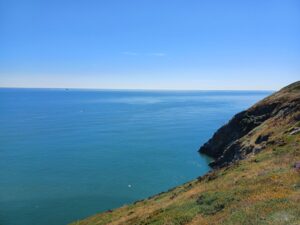
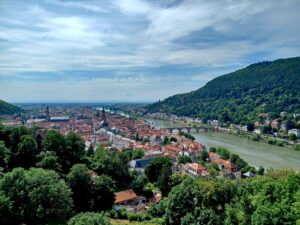
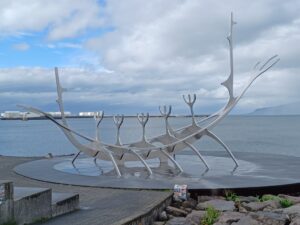

Leave a Reply